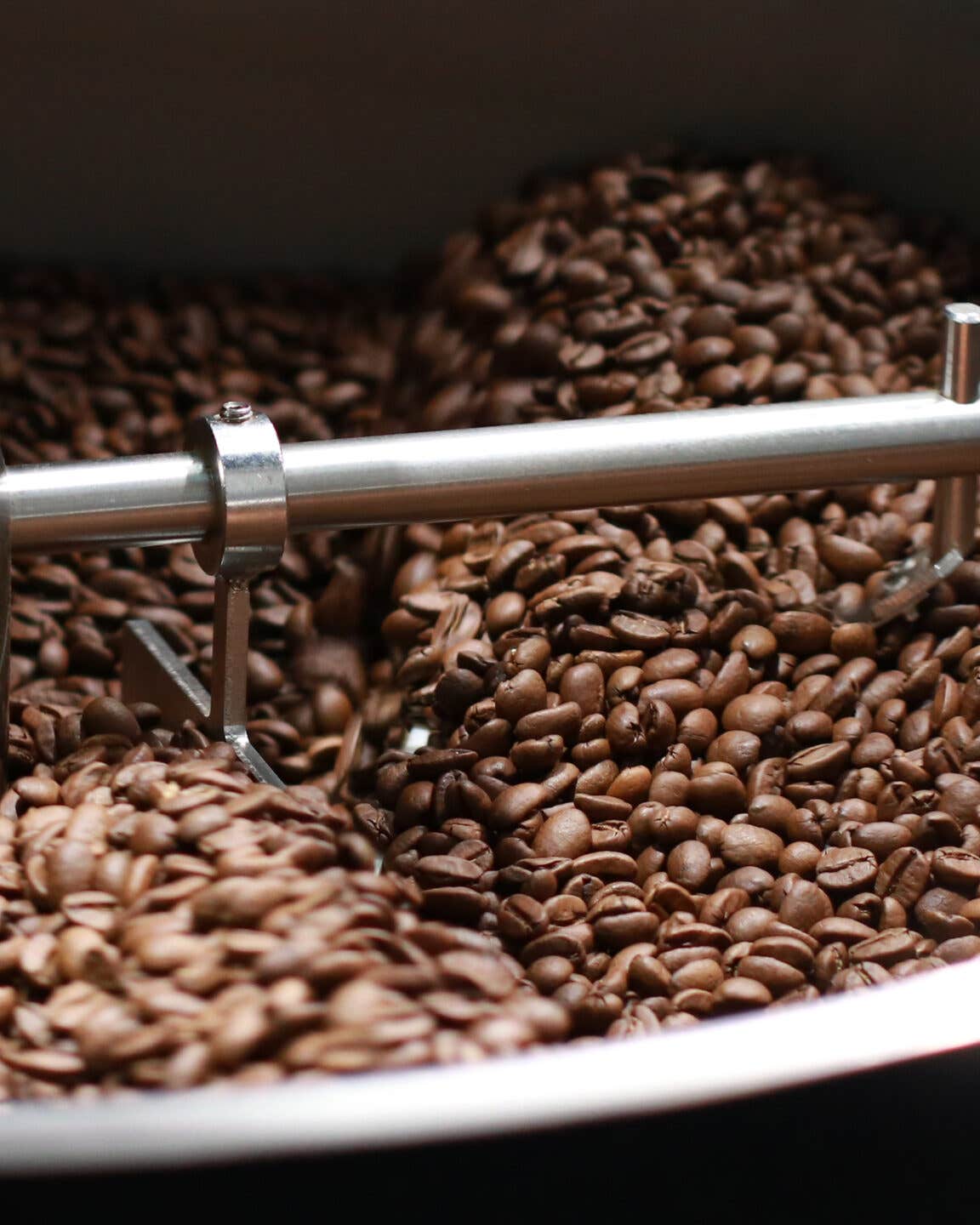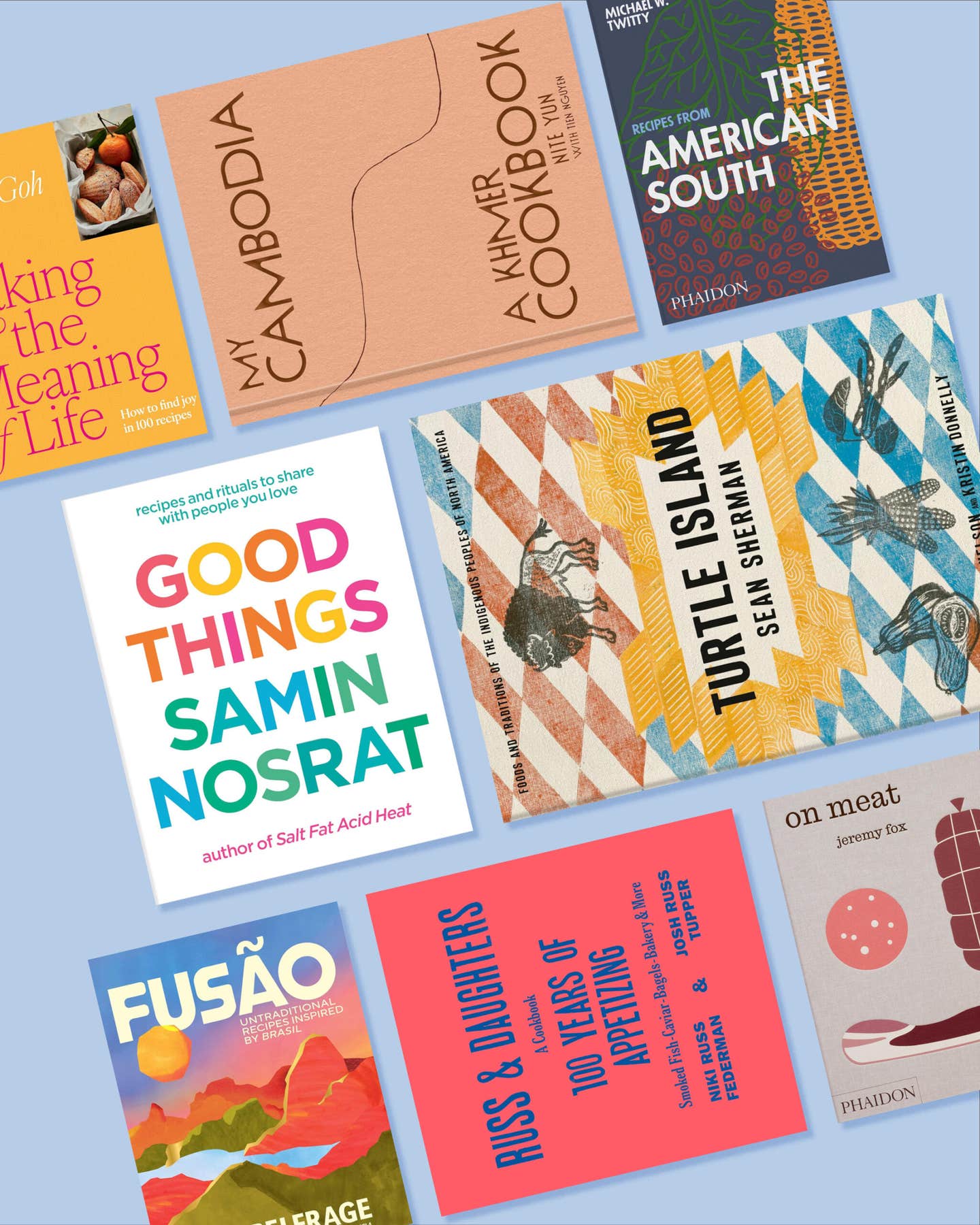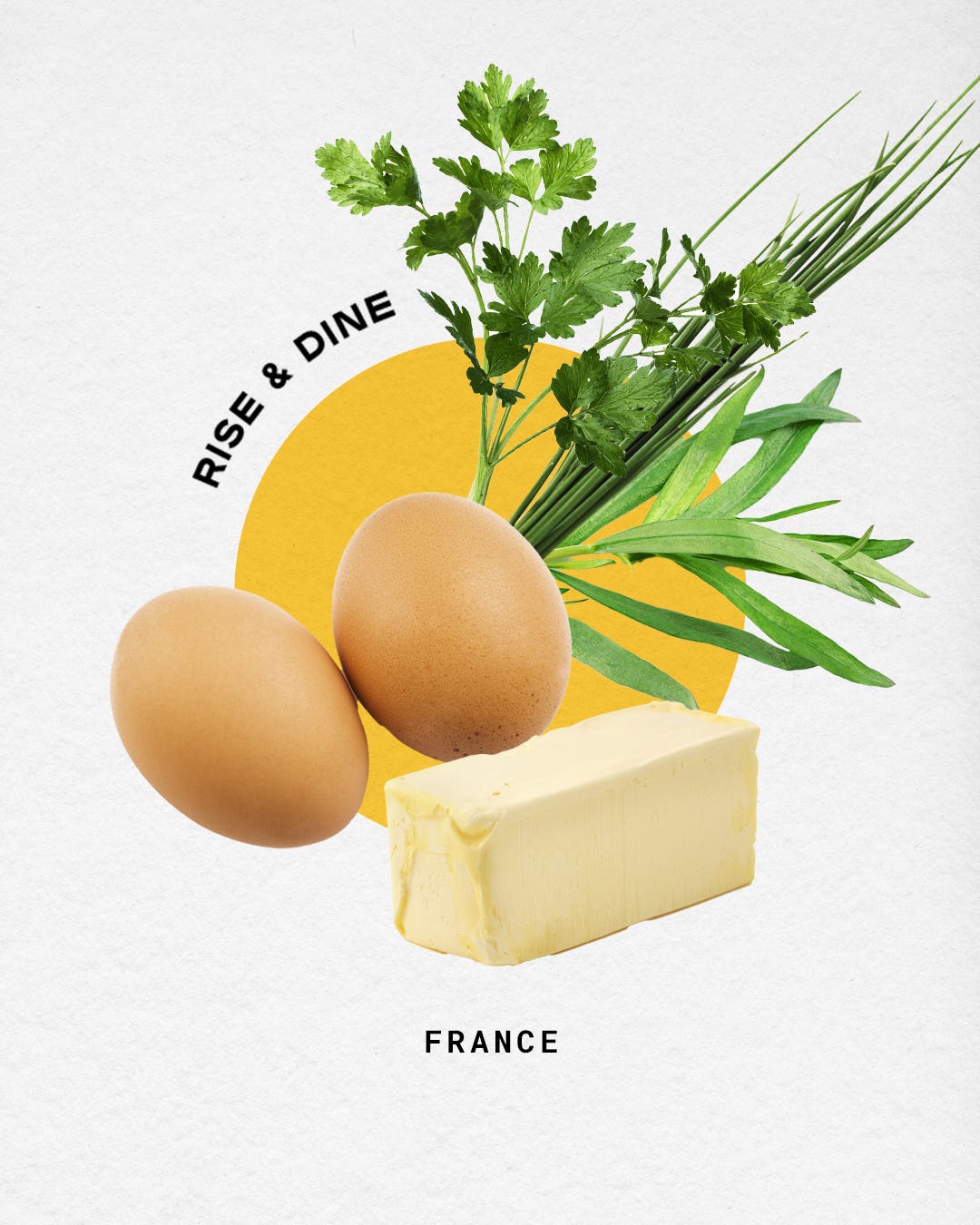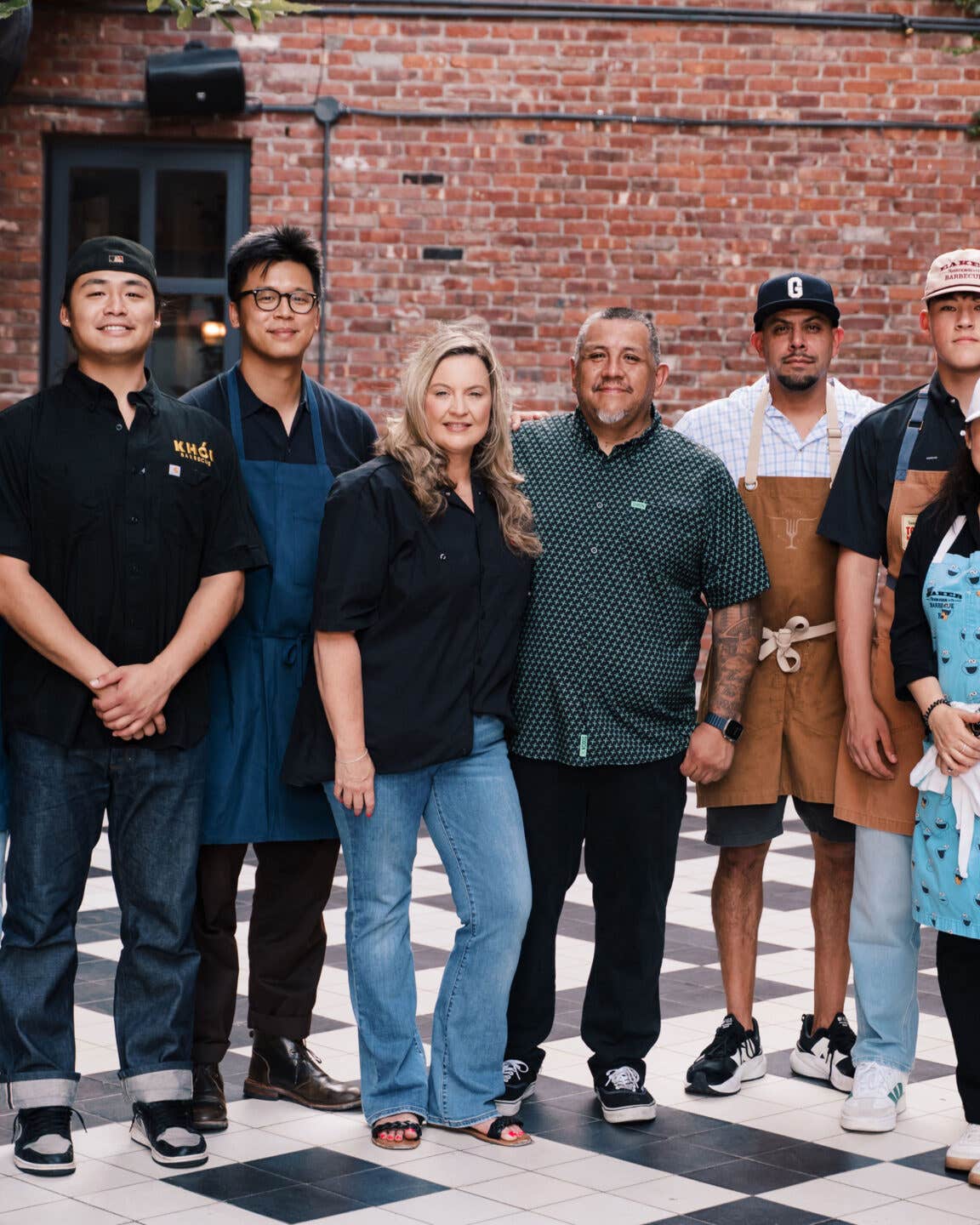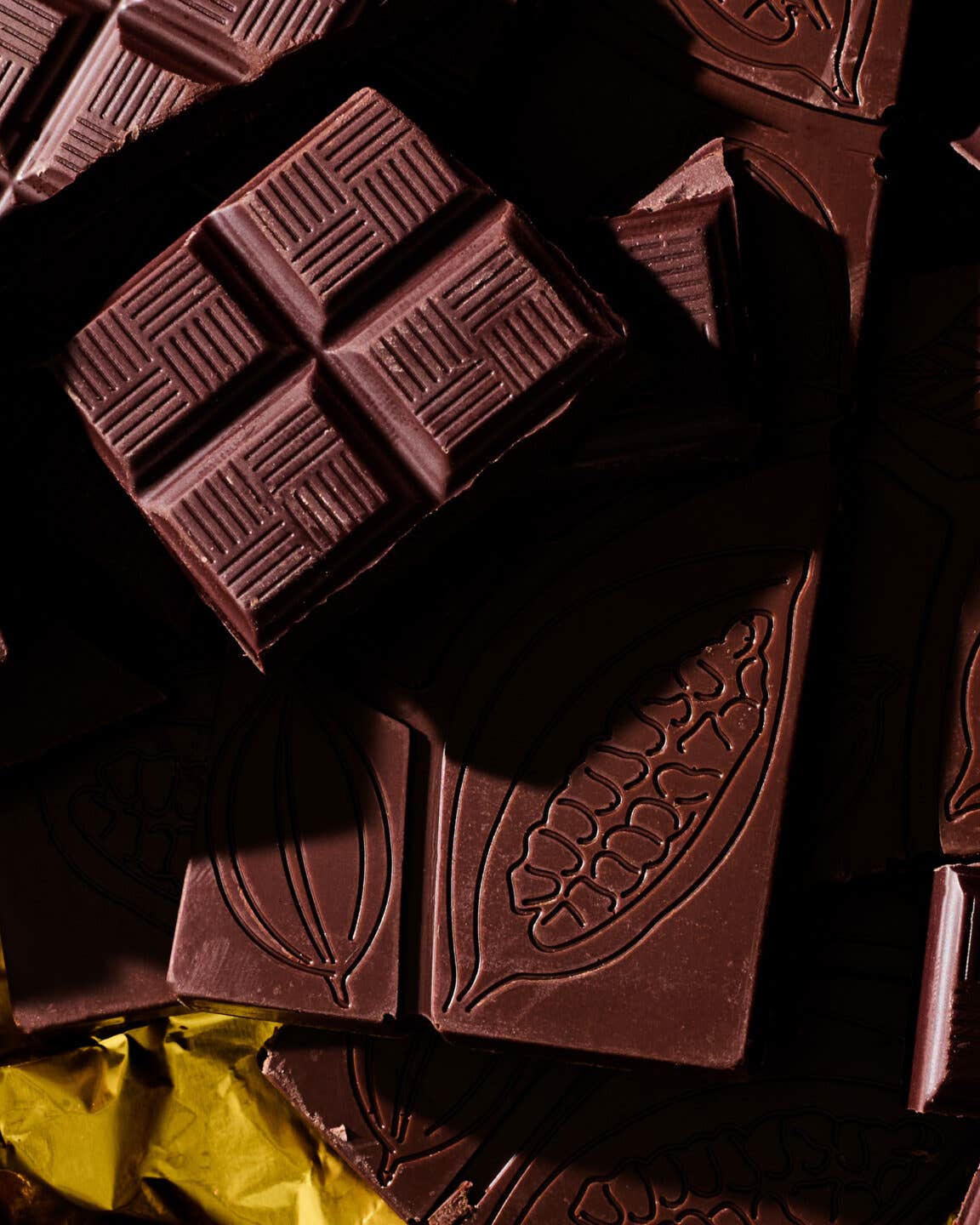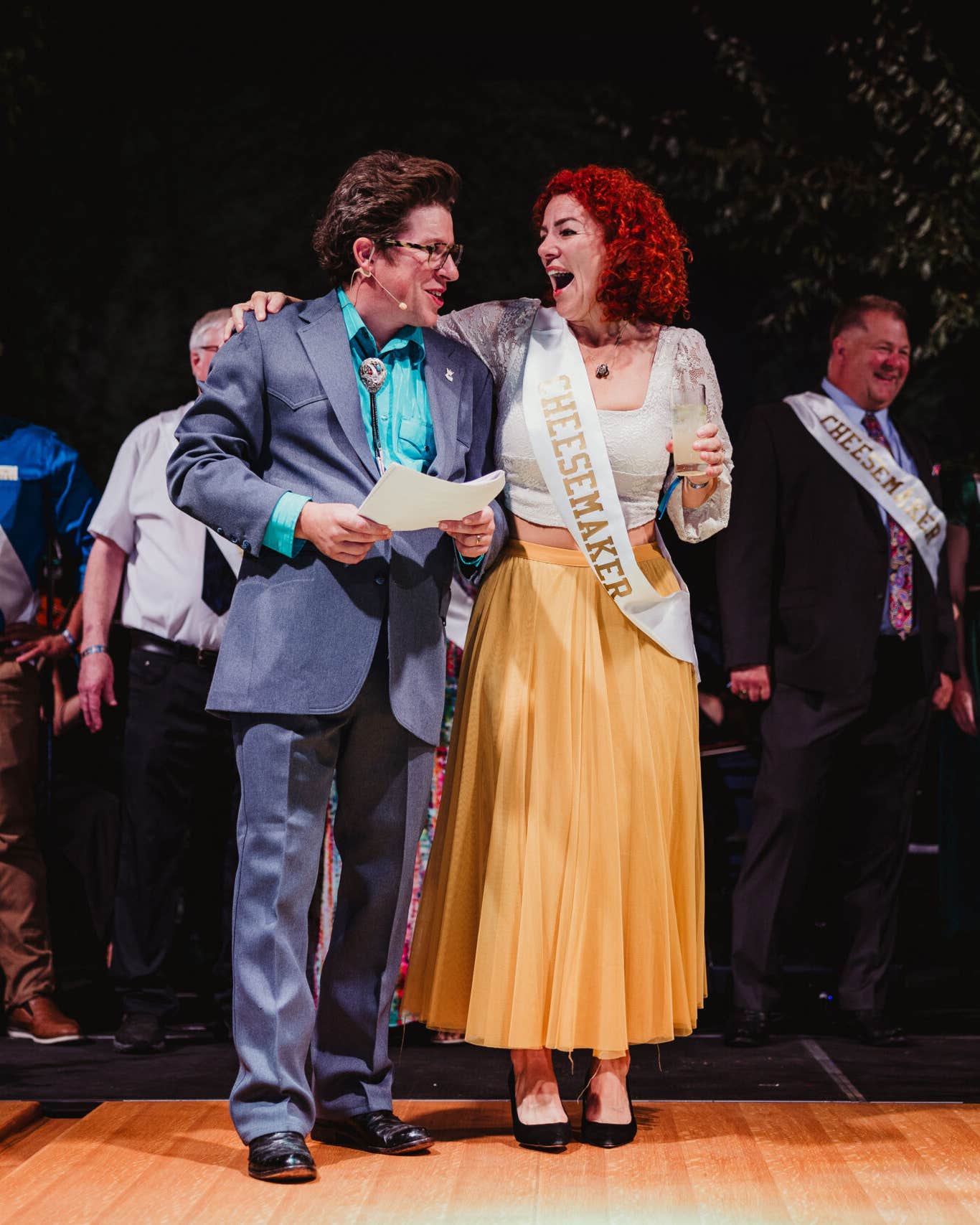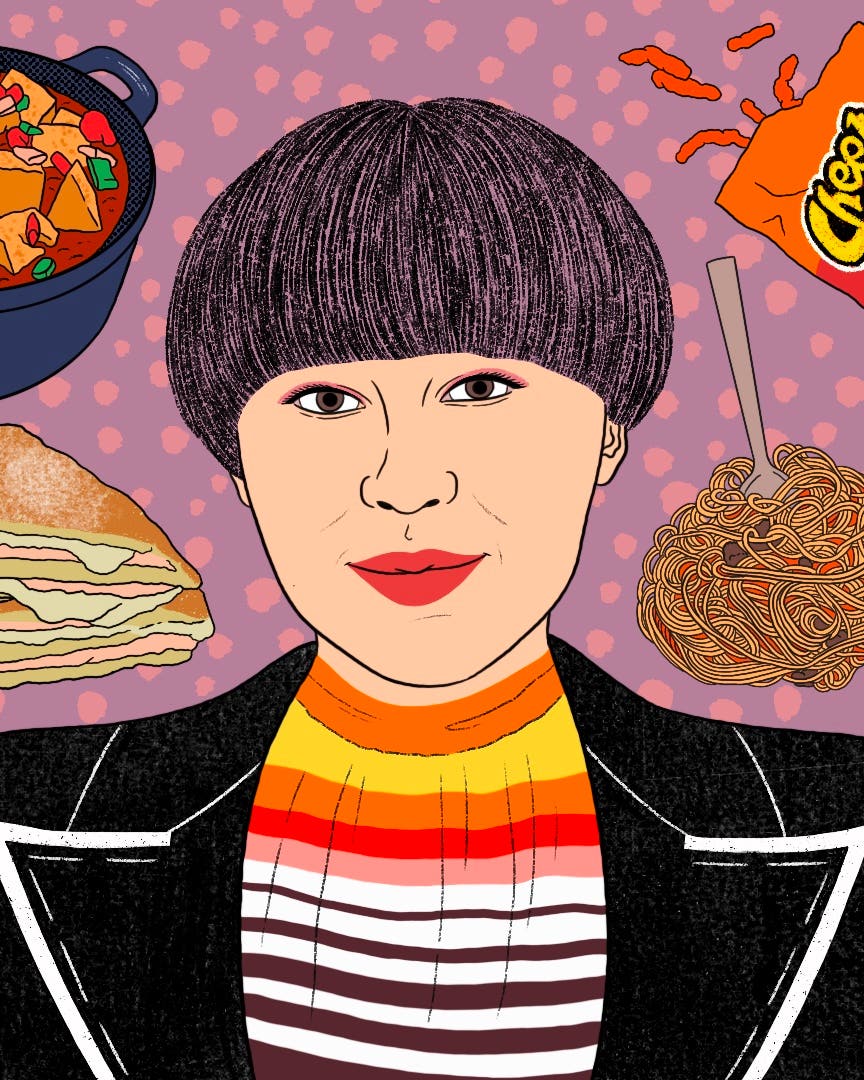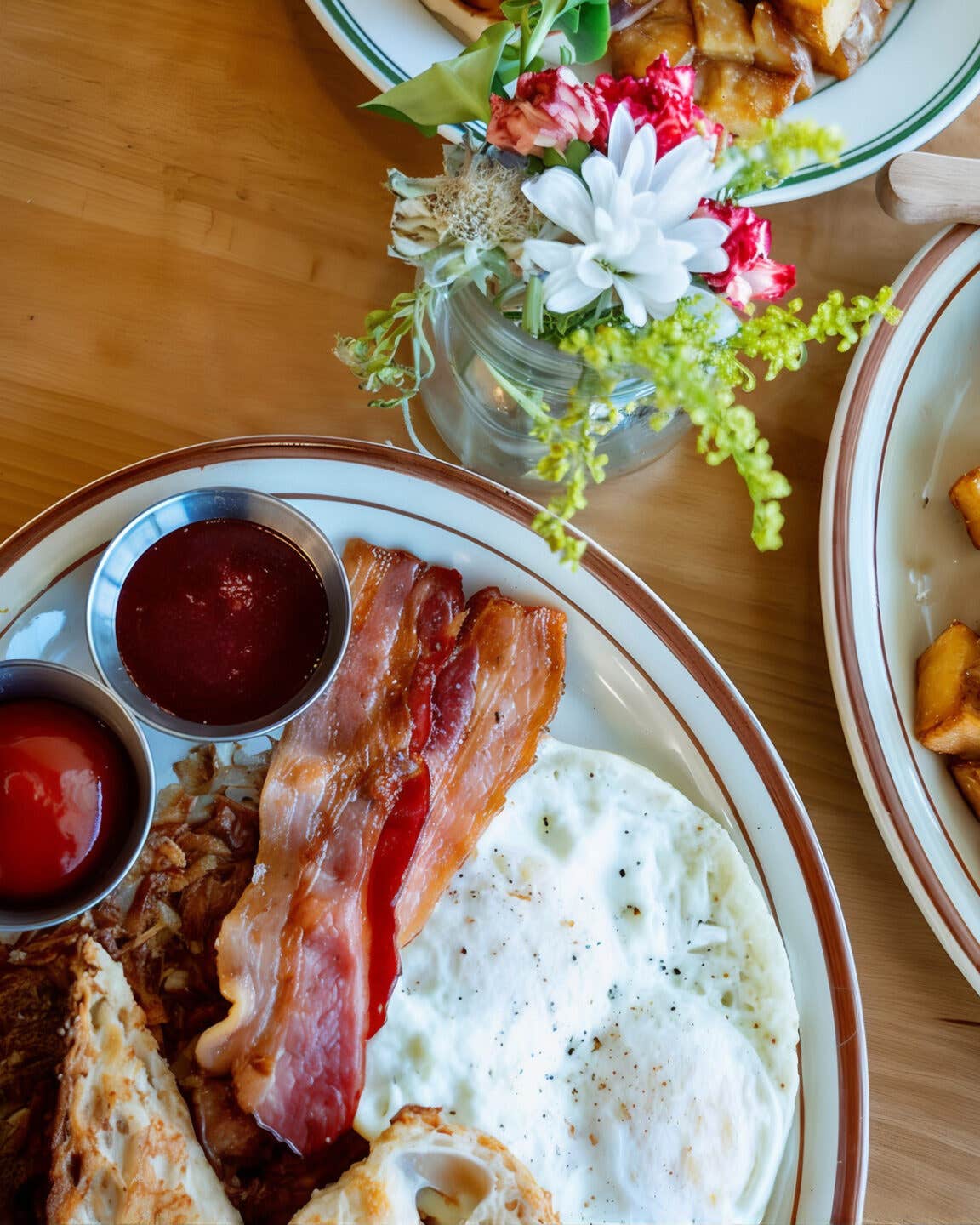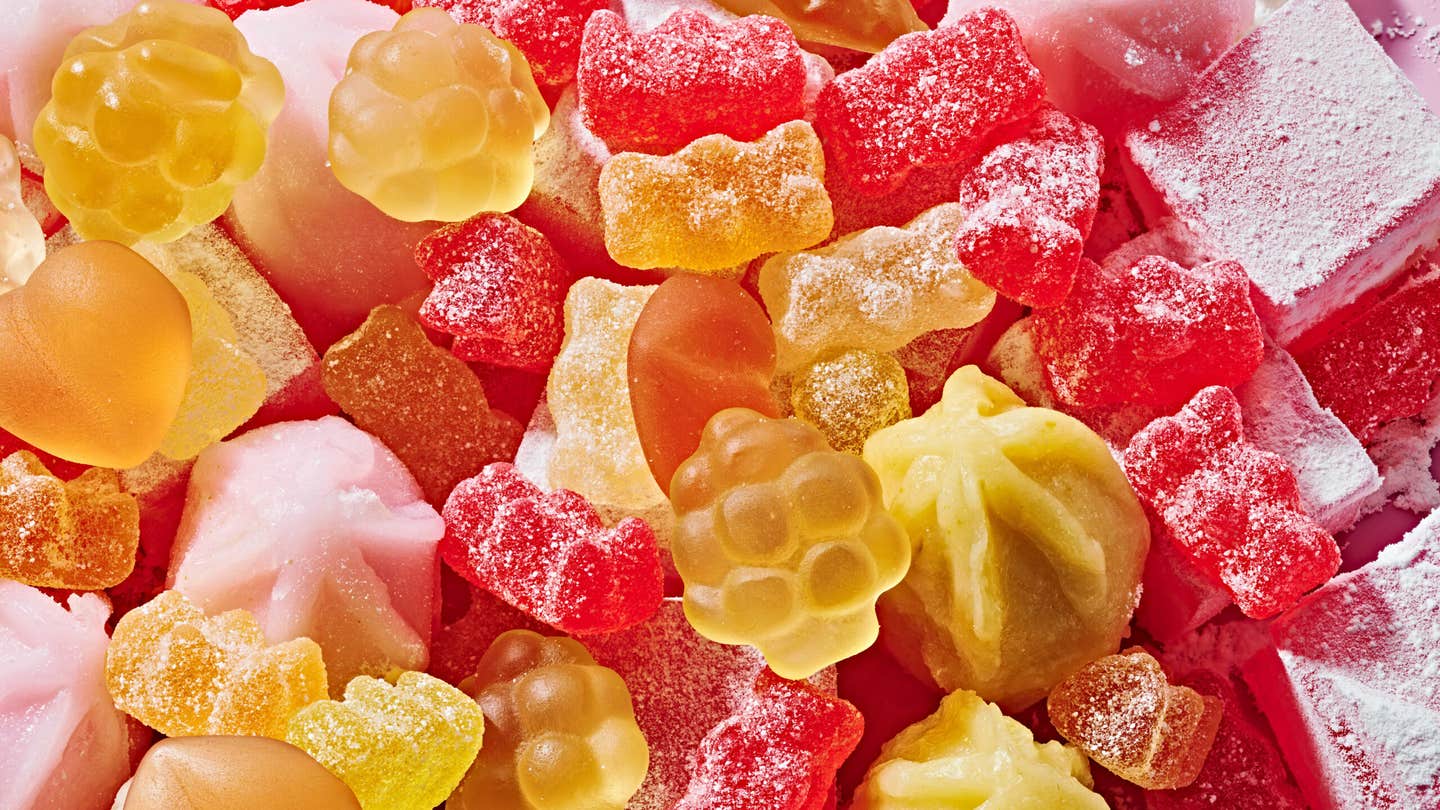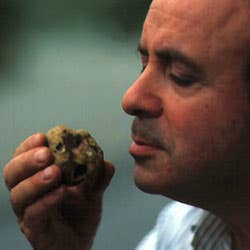
Truffles in Black and White
They’re extravagant, an indulgence, and quite possibly the world’s sexiest food.
My first truffle, a black one about the size of an apricot, was given to me as an impromptu birthday present years ago, while I was working at my first chef's job in New York City. A friend appeared at the kitchen door and handed me a truffle he'd just pinched from the much posher restaurant where he was a captain. Since I was very busy, I put the truffle in the breast pocket of my chef's coat, planning to deal with it later. Before I knew it, though, its extraordinary aroma, released by my body heat as I worked, had all but engulfed me. It was intoxicating—a smell I knew intimately, yet had no conscious memory of, triggering a flood of elusive associations, like flashbacks into some amnesiac period of my life, or some prenatal memory.
That night, after work, my friend the thief and I ate that heady truffle, sliced and warmed in French butter, over egg noodles, and drank champagne and celebrated. It was a rite of passage for me as a young cook, my first experience of the remarkable feeling that truffles seem to kindle, at once ecstatic and peaceful, earthy and sublime.
The great chef Fernand Point once claimed that he would like to be buried in truffles. Alexandre Dumas imagined the truffle itself declaring, "Eat me and adore God." If you've never tasted—or smelled—a truffle, you might well find it difficult to imagine what all the fuss is about. How could truffles possibly be as good as they are said to be? Are they really just an affectation of the elite, an emblem of gastronomic snobbery? What are they, anyway? What's their great appeal?
Like mushrooms, the truffle is a kind of fungus, or, more correctly, the fruit of a fungus—though unlike mushrooms, truffles grow entirely underground. There are some 70 species of truffle, but only two are highly prized for their culinary value: the black truffle, Tuber melanosporum, found in various parts of France, especially in the Perigord and Provence, and the white truffle, Tuber magnatum, found principally in Italy's Piedmont region.
Food-lovers sometimes debate over which is better—rather silly, since each has its own unique character and its own uses. White truffles, which are immensely, almost unsettlingly, fragrant and are more beige or ivory-hued than white, are rarely cooked; they're almost always shaved raw onto pasta, risotto, and other dishes. Black truffles, which are sometimes more brown than black in color, have a pronounced but less dramatic odor and are usually cooked. They seem to need help to release the fullness of their flavor. "Black truffles need to be teased," writes Richard Olney in The French Menu Cookbook, "macerated, marinated, steeped, sweated, or left in contact with other ingredients for a certain amount of time."
Black and white truffles do have two things in common: Both are harvested by cultures devoted to good food and wine. And both are very expensive. It is fitting that truffle season encompasses the year-end holidays, because truffles are an extravagance, an indulgence—the ultimate symbol of celebration and connection.
This still doesn't explain the primal appeal of truffles, though—some of which surely has to do with their haunting and indescribable aroma. White truffles are particularly pungent. Their scent has been compared to everything from gym socks to mildew to sex.
But the effects of truffles reach beyond mere smell, or even flavor. Descriptions of the things, and especially of first experiences with them, tend to stray into metaphysics. Paula Wolfert writes in The Cooking of South-West France that her first truffle, a black one baked in salt crust, "seemed to me like earth and sky and sea. I felt at one with nature, that my mouth was filled with the taste of the earth. There was a ripeness, a naughtiness, something beyond description … it was utter luxury and earthiness combined." Wine writer Joshua Eisen says this: "It's not so much how the truffle smells, it's how it makes you feel. It has an immediate effect on you. It transforms you somehow. Truffles are like the essence of nature—not just plant life, but animal life as well, the higher forms."
In 1993, I made two trips to northeastern Italy, to visit the famous white truffle market in Alba, in the Langhe region of Piedmont, about 35 miles south of Turin.
Alba, a small medieval town that seems all piazzas and towers, is the gastronomic capital of the region. Piedmontese cuisine is comparatively simple but very rich, as if to stand up to the often-chilly local climate—and to Piedmont's formidable world-class red wines, barolo and barbaresco. On winter Saturdays, the crowded market in the Piazza Marconi overflows with the products on which the area's cold-weather cooking is based—hazelnuts, chestnuts, wild mushrooms, wild game, a treasury of cheeses.
During the brief white truffle season each year, from September through December, it is Tuber magnatum that becomes the pervasive gastronomic presence in Alba. It's as if the truffle holds the town under some powerful ancient spell. Its scent is everywhere, carried on the chill air, billowing out in sudden gusts from grocery stores and restaurants. Truffles are seen, displayed like strange homely gems, in the most unlikely shop windows—wineshops, even clothing stores—and in spare little temporary outlets devoted exclusively to the fungus.
In practically every restaurant a handwritten sign is tacked to the wall, reading simply tartufi bianchi, with a price attached—usually about $15 or $20. This is what it costs to have a portion of truffle shaved directly onto, well, whatever you wish—the classic Piedmontese tajarin or taglierini (thin egg noodles dressed with butter and sage), risotto, fonduta (rich fontina cheese melted into a velvety cream), veal carpaccio, even simple buttered bread.
I found the Alba truffle market in a large tent in the Cortile della Maddalena. Truffles perfumed the air for half a block around. Inside the tent, about 30 truffle dealers were offering their wares on folding tables, lifting them out of cigar boxes like children playing show-and-tell. Another 50 or so men—the truffle trade is entirely or almost entirely a male preserve—in drab suits, without tables, acted more secretively. They stood in groups of three or four, carrying their truffles in one hand, cradled in paper, holding them at about hip level—as if selling something forbidden.
The Alba truffle market is the focal point of the town's annual October truffle fair and of the many truffle celebrations and related events that take place throughout the region every fall. As I later found out, though, it's really more for tourists and casual purchasers than for serious buyers. The serious ones trade in truffles early in the morning at informal, sometimes clandestine, street markets in the small villages around Alba. Here, the region's trifulau, or truffle hunters, mill around with paper-wrapped truffles in their pockets, revealing them only to earnest customers. Despite government attempts to tax them, truffles remain largely a cash business, and hence elude strict documentation. Tax collectors, called fisci, try to keep track of the huge revenues generated by the truffle trade by patrolling the Alba region frequently in season—and dealers in the clandestine scatter like flies at any rumor of an approaching fisco.
I met Paolo Cerutti at the Alba truffle market, where he often has a table, and he invited me to visit his family's shop, Dal Trifule (Of the Truffle), in the nearby hill town of Monta d'Alba. Here, the Ceruttis sell prodotti tipici of Piedmont. I arrived to find a tidy, stylish little store. Baskets of wild mushrooms and hazelnuts sat in the corner. The shelves were lined with wine, flavored grappas, jars of fruits in syrup, traditional hazelnut cakes wrapped in paper and tied with string, nougat, honey, porcini in olive oil, truffle cream, and truffle oils. A small refrigerated case was filled with homemade tortelloni de plin (their ends pinched rather than twisted), gnocchi, and taglierini, and with astonishing local truffle-scented crutin and tuma cheeses. And of course there were just plain truffles.
While I was in the shop, a man came to the back door and asked to see Paolo. He pulled a newspaper-wrapped package from his coat pocket and opened it on the counter. Inside were half-a-dozen large truffles. Cerutti inspected them carefully, smelled them, weighed them. There was much murmuring and gesturing as they haggled over the price and discussed the quality of the truffles. Finally, Cerutti pulled out his wallet and paid the man, and the deal was done. He buys almost exclusively from the trifulau, he says, and resells what he has purchased not only in his store and at the Alba market but also in the clandestine markets. He sells all the truffles he can get, he says, no matter what the price.
The Cerutti family has hunted truffles for generations, and early one morning, Paolo took me to visit the plot of truffle land that had been given to him by his great-uncle. As we walked through the woods, his truffle hound, Kira, ran frantically about, sniffing wildly, her nose to the ground, from one tree to the other.
Along the way, Cerutti offered a wealth of truffle lore—much of which applies to black truffles as well as to white. Tuber magnatum will grow only beneath certain kinds of trees, he explained—lindens, willows, hazelnuts, poplars, and especially oaks. Nobody knows, however, why some will yield truffles and some won't. "Truffles and trees have a symbiotic relationship," he continued. "When a tree needs certain nutrients, it grows a truffle," he said. In a complex and little-understood interaction, apparently, the truffle adds minerals to the soil (phosphorus, for instance) to help feed the tree; the truffle, meanwhile, extracts sugars from the tree's roots that enable it to grow. The nature of the soil—it must be chalky—and the climate are crucial factors in the truffle's development, too. Truffles need a wet spring, a hot summer, frequent thunderstorms in August, and a moderately cool autumn. Like wines, truffles have good and bad years.
Several years ago, German scientists discovered a chemical in truffles similar to one secreted in the male pig's saliva—a sex pheromone, to attract sows. This would explain why female pigs are so good at finding truffles. Pigs are rarely used for the task anymore, however, because they like truffles and it's hard to keep them from eating what they find. Dogs, usually mongrels like Kira, are now trained to hunt truffles. A good truffle dog can cost thousands of dollars.
When Cerutti was a boy, he recalled, his father, who was a great truffle hunter, gave him what then seemed like startling advice: Don't start caring too much about truffle hunting. "When you are my age," his father continued, "there will not be truffles like there are now." This proved prescient. Overharvesting and destruction of truffle lands are a great problem in Piedmont. "When I was growing up," remembered Cerutti, "there were five people locally who hunted truffles. Now there are over 40. In my father's time, people hunted truffles for pleasure. Now they hunt them for money, only for money. My father hunted truffles for only two hours a day, during time off from his job as a baker. [During the brief season, truffles must be gathered as they ripen; if they're left in the ground, they will deteriorate.] Even at that, he'd come home with a kilo or two of truffles every time he went out." Paolo pointed from one end of the valley to the other. "This used to all be truffle land," he said. "Now there is only truffle in a few places, maybe one here, maybe one there."
As we drove back to his store, Cerutti bemoaned the lack of regulation, the politics, the overbuilding, pollution, and apathy that were changing forever the character of the land. "People have cut down many trees," he said, "and you cannot make truffles without them. They let the land grow up into brush, get dirty. To have truffles you must take care of the land. People don't realize when they cut down the trees, they are destroying their own culture."
The black truffles of France are harvested mostly in the departements of the Dordogne and Lot in the Perigord, in southwestern France, and in that of the Vaucluse, in Provence. The season is later than that for white truffles, extending approximately from December to February. If Italy's white truffles are intimately associated with the cuisine of Piedmont, France's black truffles belong above all to the epicurean culture of the Perigord, the French region best known for foie gras and for the ducks and geese from which it is produced—as well as for armagnac, the legendary "black" wines of Cahors, and even the great vintages of Bordeaux, which come from not very far away.
Like Piedmont, the Perigord no longer produces anywhere near the quantity of truffles it did 30 years ago, having also suffered from neglect, overharvesting, and deforestation. French consumption of truffles has long outstripped the supply, and today a large portion of the truffles sold as French are imported from Italy and Spain. Still, the truffle maintains its strong presence in the Perigord with vibrant markets in towns like Perigueux, Sarlat, Excideuil, Brantome, and Vergt. The village of Sorges, which considers itself to be the truffle capital of France, is home of the Maison de la Truffe, a museum devoted to every aspect of the truffle. The museum also maintains a Sentier des Truffieres, or truffle hunters' path, just outside the village—a self-guided, mile-and-a-half walk through prime truffle country.
Some of the most important truffle centers are now many miles from the Perigord, in Carpentras, in northern Provence. The picturesque truffle market in Carpentras, in the heart of the Vaucluse, takes place on Fridays from December through February in various locations. The town's Cafe des Voyageurs serves as a sort of office for the truffle dealers, or caveurs, before the market opens. Here they make their connections, listen for pertinent gossip, discuss the going price, and weigh their goods on hand-held Roman scales. These dealers sell only in large quantities, disdaining casual interlopers seeking to buy just a truffle or two. An air of secrecy hangs heavy in the air.
The market itself begins at about 9:30 in the morning. Around one side of the square about 25 dealers display their truffles, earth still clinging to them, in rough cloth sacks set on makeshift tables and benches. The sounds of haggling, arguing, and accusation fill the air—this caveur hid inferior truffles under the beautiful ones, that one's aren't aromatic enough, and so on. If he feels a buyer is serious, the dealer might cut open one of his truffles with a small knife and reveal the interior veining to prove the integrity of his truffles. Intense negotiations continue until lunchtime, when they abruptly end for the day.
As with any rare and expensive commodity, deception is commonplace with truffles; unscrupulous dealers have been known to color inferior truffles artificially to pass them off as the fine Perigord variety—though it's hard to imagine so simple a trick working on these shrewd dealers.
Photographer Christopher Baker told me of an extraordinary day in 1987 when he accompanied three three-star French chefs—Georges Blanc, Marc Meneau, and Alain Senderens—and a truffle dealer from Paris, to the Carpentras market. His account sounds like some marvelous culinary fairy tale. Spending many thousands of dollars, the group bought enough truffles among them to stuff a station wagon—which is exactly what they did.
The chefs went out that afternoon near Carpentras with Jacques Pebeyre, considered one of France's greatest trufficulteurs. On the cutting edge of the latest research in cultivation and harvesting, Pebeyre is one of the few would-be truffle cultivators who has enjoyed some measure of success "seeding" fields of oak and other trees with acorns inoculated with truffle spores. (There have been other attempts at truffle cultivation in Italy, Spain, northern California, and East Texas.) Pebeyre has also been trying to develop a means of hunting truffles mechanically, since it is believed that an enormous number of ripe truffles elude detection by dogs and are never harvested.
As Pebeyre is the first to admit, though, despite all the theories, all the accumulated knowledge, and all the attempts to tame the truffle one way or another, it remains essentially wild—a sublime and enduring mystery.
Keep Reading
Continue to Next Story
